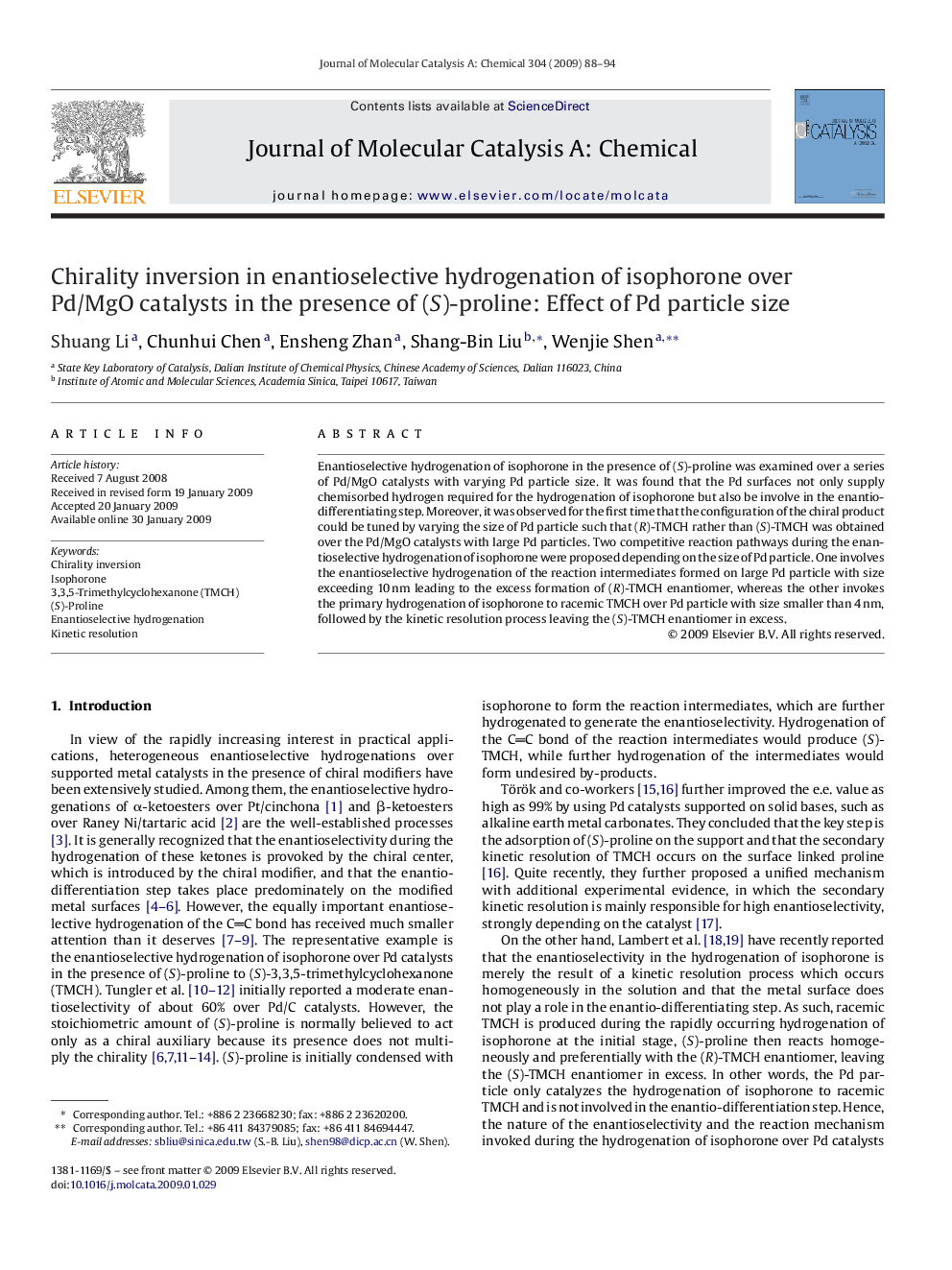| Article ID | Journal | Published Year | Pages | File Type |
|---|---|---|---|---|
| 67053 | Journal of Molecular Catalysis A: Chemical | 2009 | 7 Pages |
Enantioselective hydrogenation of isophorone in the presence of (S)-proline was examined over a series of Pd/MgO catalysts with varying Pd particle size. It was found that the Pd surfaces not only supply chemisorbed hydrogen required for the hydrogenation of isophorone but also be involve in the enantio-differentiating step. Moreover, it was observed for the first time that the configuration of the chiral product could be tuned by varying the size of Pd particle such that (R)-TMCH rather than (S)-TMCH was obtained over the Pd/MgO catalysts with large Pd particles. Two competitive reaction pathways during the enantioselective hydrogenation of isophorone were proposed depending on the size of Pd particle. One involves the enantioselective hydrogenation of the reaction intermediates formed on large Pd particle with size exceeding 10 nm leading to the excess formation of (R)-TMCH enantiomer, whereas the other invokes the primary hydrogenation of isophorone to racemic TMCH over Pd particle with size smaller than 4 nm, followed by the kinetic resolution process leaving the (S)-TMCH enantiomer in excess.
Graphical abstractThe configuration of the chiral product in enantioselective hydrogenation of isophorone is strongly dependent on the size of Pd particle. Pd particles smaller than 4 nm favor a primary hydrogenation of isophorone to TMCH, followed by a kinetic resolution giving (S)-TMCH. Pd particles larger than 10 nm produce (R)-TMCH through the hydrogenation of isophorone–proline adduct.Figure optionsDownload full-size imageDownload as PowerPoint slide
